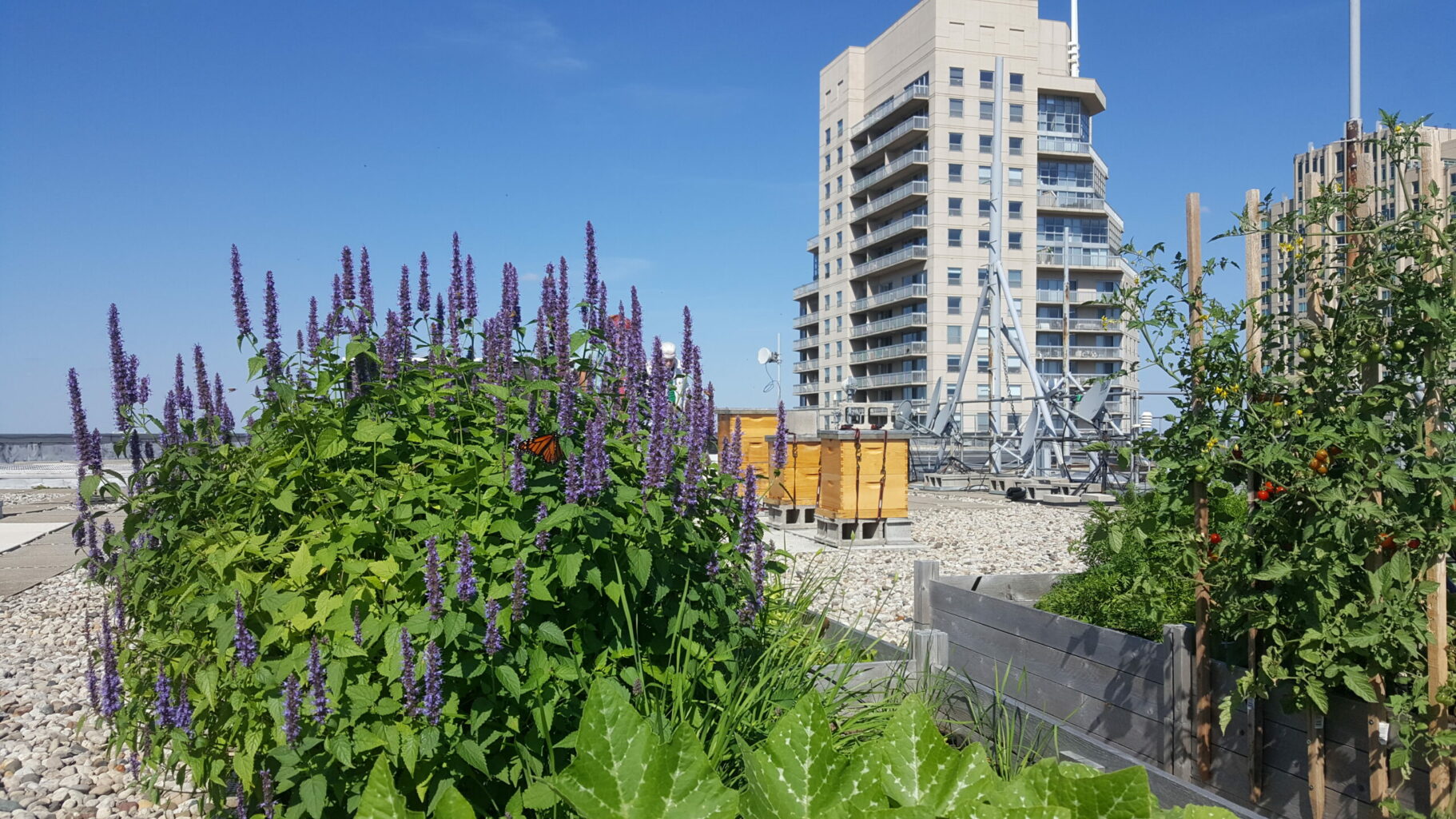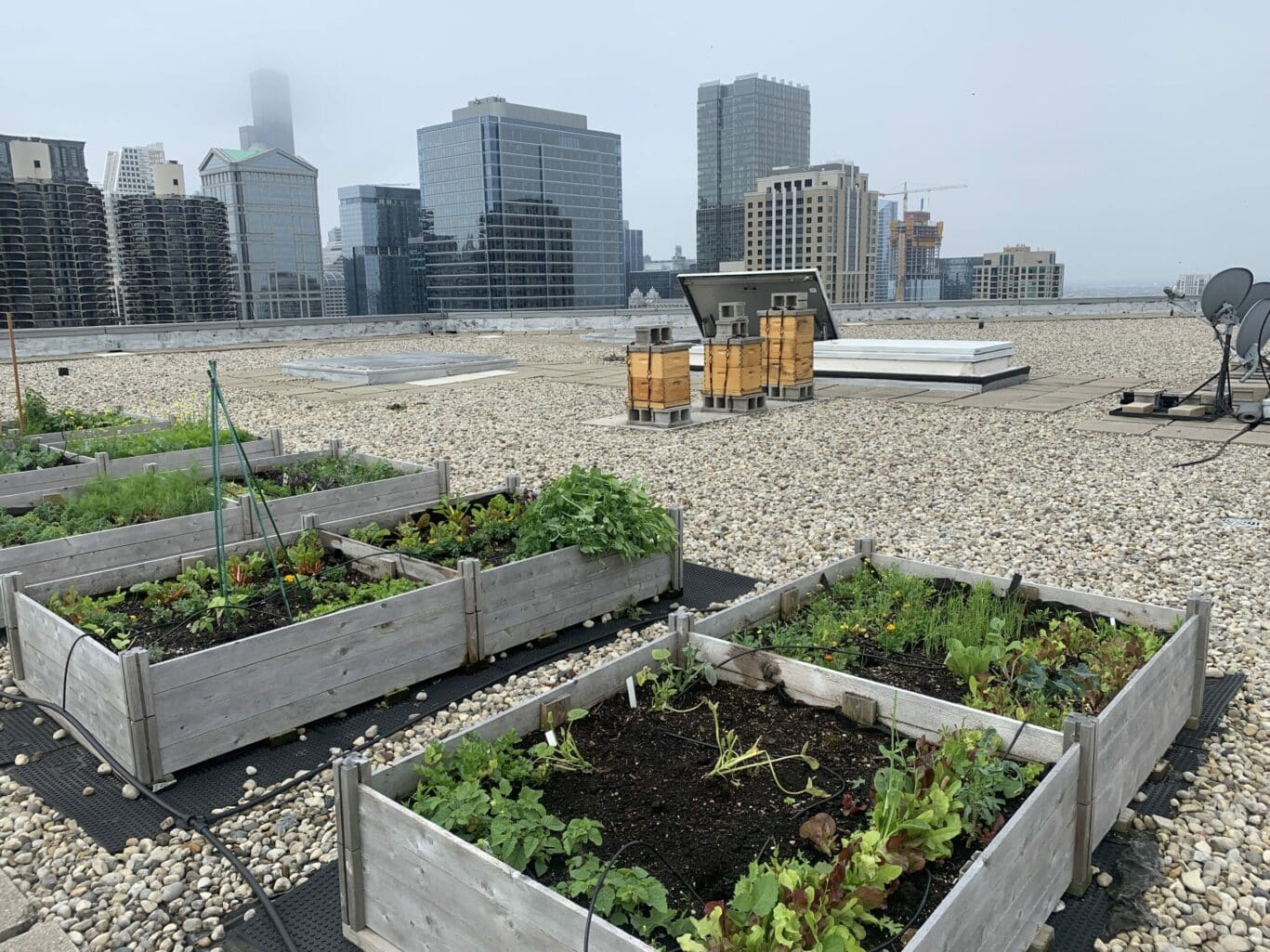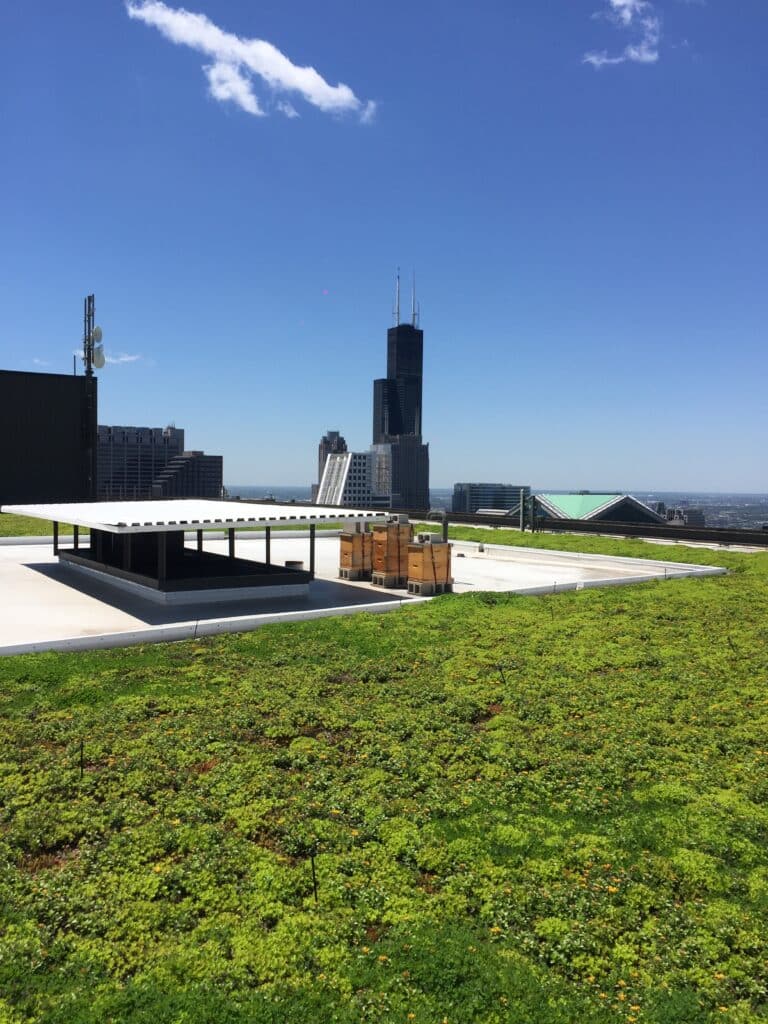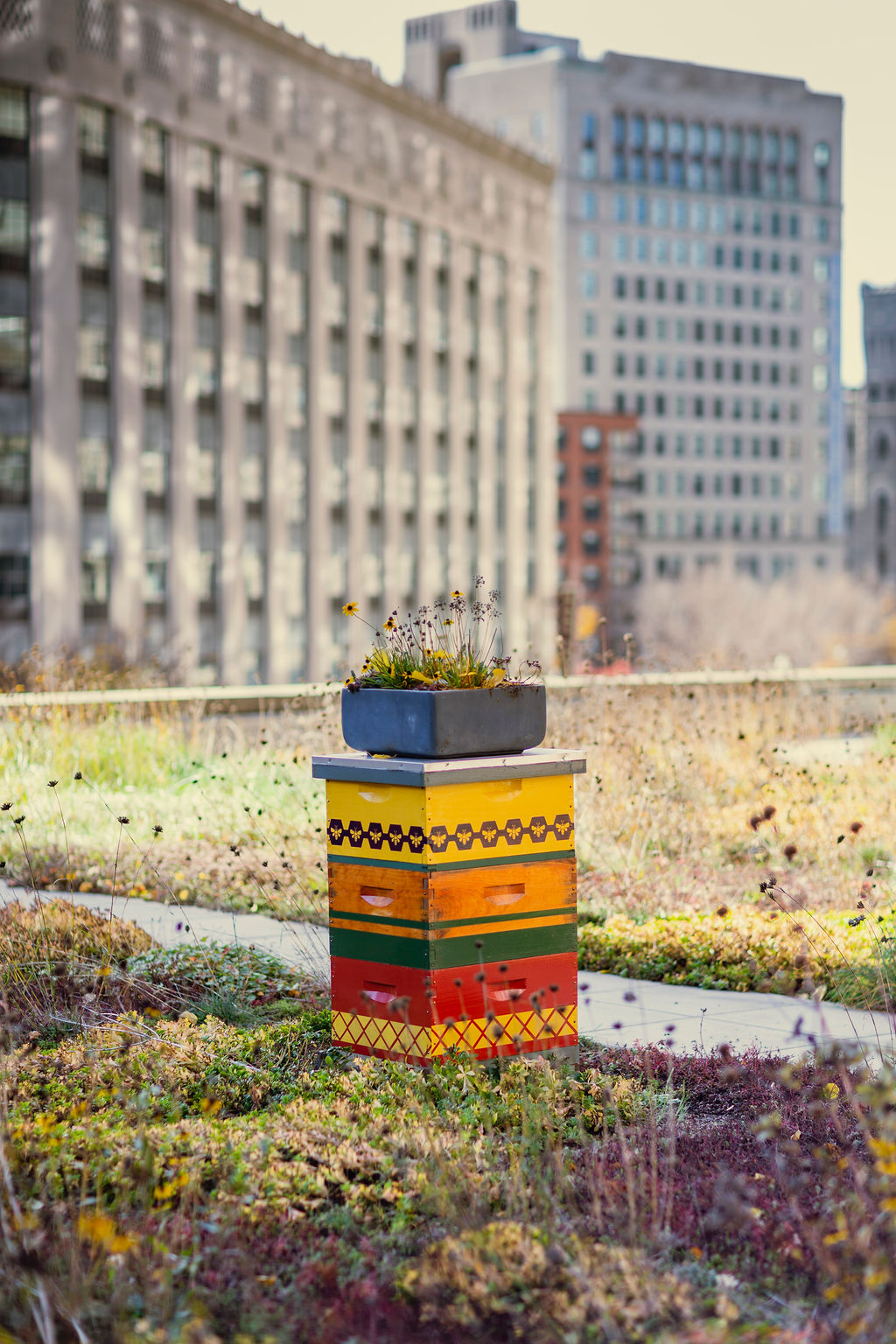Imagine a near future when all cities are green cities. Abandoned lots turned into urban farms. Crops growing on warehouse roofs. Flowers in window boxes, balconies and gardens. Fruit trees lining streets. Waterways teeming with fish. Wildlife living among us. The air filled, not just with the sound of vehicles, but the song of birds, the click and rattle of insects, the buzz of bees.
An improbable dream? Not to us.
At The Best Bees Company, we believe this future is coming, and coming soon. We’re confident in this because we believe it doesn’t mean years of planning, massive government spending or regulation. Making this vision a reality requires only a change of perspective, relatively small investments of time and money by the people and organizations who live, work and play in our cities, and a little science to help direct us.
A Change of Perspective
Let’s start with perspective. When we look at wilderness—say, a national park—we see diverse ecosystems where millions of species live in a complex yet harmonious state. When we look at cities, we think of manmade environments, where nature, what little we see of it, is there to serve us. We see grass for playing fields. Street trees for shade. Flowers to delight us. What’s left of the old natural environment? Not enough in our opinion.
But without our help, nature is here in profusion in our cities. Some species are even thriving. Instead of seeing the built and the natural as opposing systems—we have some nature here, and the rest is manmade—what if we saw them as one? The manmade helping nature to rebound, the natural improving the health and well-being of mankind.
In changing our perspective—seeing our cities as complex ecosystems, just like wilderness areas—we understand the need for greater diversity in what we plant and what we encourage to live around us.
Why Biodiversity is Important
Variety is nature’s way of assuring the health of the larger system. Species compete with, eat and are eaten by each other. Through competition, species become stronger. If one species is threatened, another takes its place. The healthy whole is the sum of man, many changing parts. Less diversity means fewer species, means a more vulnerable, struggling system. Diverse urban ecosystems are healthier, and more resilient. Healthy ecosystems improve the quality of the air we breathe and the water we drink. They provide nourishment—for the body and the soul.

Investments we each can make to promote ecological diversity
Inspired by the vision of a greener city? Want to help make your city more ecologically diverse? There are many things you can do to help.
As a resident:
- If you have outdoor space—a garden, balcony or window box—grow a variety of plants, especially native species. Avoid pesticides and herbicides.
- Ask your city government to sell abandoned lots to urban farming organizations.
- Purchase produce from local farms, ideally in or close to your city.
- Let flowering weeds, like dandelions grow. They might look a little messy, but they provide nourishment for pollinators and animals.
- Ask your road department to plant trees on your block. Offer to water them until they’re well-established.
- Ask your parks department to avoid cutting grass along the margins of parks and playing fields. Letting them “go to seed” will create small meadows that are great habitat for wildlife.
As a property owner or manager:
- Plant a roof top garden with a variety of species or set up rooftop allotments where residents can have gardens.
- Keep honey bees in rooftop hives. Plant pollinator gardens that will provide season-long variety of nourishment.
- Redesign outdoor spaces to include more planted environments that include a variety of plants and trees.
- Rethink current plantings to feature more plants that will bear seeds, nuts and berries for wildlife to eat.
- Provide nesting space for native pollinators, such as bumble bees, and grow plants that host the larvae of butterflies and moths, such as milkweed.
- Engage your tenants and guests in what you’re doing—the more people who see the benefits of a diverse ecosystem and want to help, the faster your city will green.
As a visitor:
- Stay in eco-friendly hotels.
- Walk, ride a bicycle or take public transportation while visiting.
- Patronize restaurants that use local, organic ingredients.
- Visit parks and mention them in your reviews.

The role pollinators play
Through pollination, bees, butterflies, hummingbirds and moths—to name but a few of the pollinators found in urban areas—help plants to reproduce, spreading their kind from garden to park, to empty lot, adding to the floral environment.
Pollinators play an important role in promoting both plant and animal diversity. Pollinators assure an abundant supply of fruits, nuts and seeds—food for animals of all kinds. The more pollinators, the more different kinds of plants will bear fruit, the more different kinds of animals that will thrive in our cities.
Pollinator diversity is essential, too. While native species thrive in natural environments, highly built-up areas in city centers may not provide the right environments for them to nest in. It’s important we create habitat, both nesting and foraging habitat, for all pollinators— honeybees and native bees alike.
How science can help
As we expand our cities we need to gauge the health of our urban environments. This is where science comes in. Scientists can monitor conditions and learn which species of plants and animals are thriving, where conditions are good and where they’re not. This data can help make important decisions about which species to plant and how to better care for them.
Honey bees have proven to be a remarkable tool to scientists studying urban ecosystems. Not only is their health an indicator of the general well-being of the environment, their honey tells us a lot about the diversity of the plants they pollinate, and with plant diversity, the diversity of the animal world.
At Best Bees we’ve pioneered the use of honeyDNA, which has given us, for the first time, an accurate determination of which plant species bees are pollinating. Early in our use of this research technique, honeyDNA revealed that urban environments are much more plant-diverse than we had expected, and are actually more than three times more diverse than the seemingly greener suburbs nearby. Over the past five years we’ve used this research to understand the degree of plant diversity from city to city, and within city micro-geographies, the diversity factors that can impact their environmental health.
Best Bees was founded in a city and is dedicated to improving the environmental health of all American cities. We’re proud of the role we—our staff, clients and bees—are playing in creating healthier, more diverse urban ecosystems. To learn more about the impact of our bee research, watch our webinar with NASA and TED Talk. Want to help your city’s environment by keeping bees? Book an assessment with one of our service reps.








